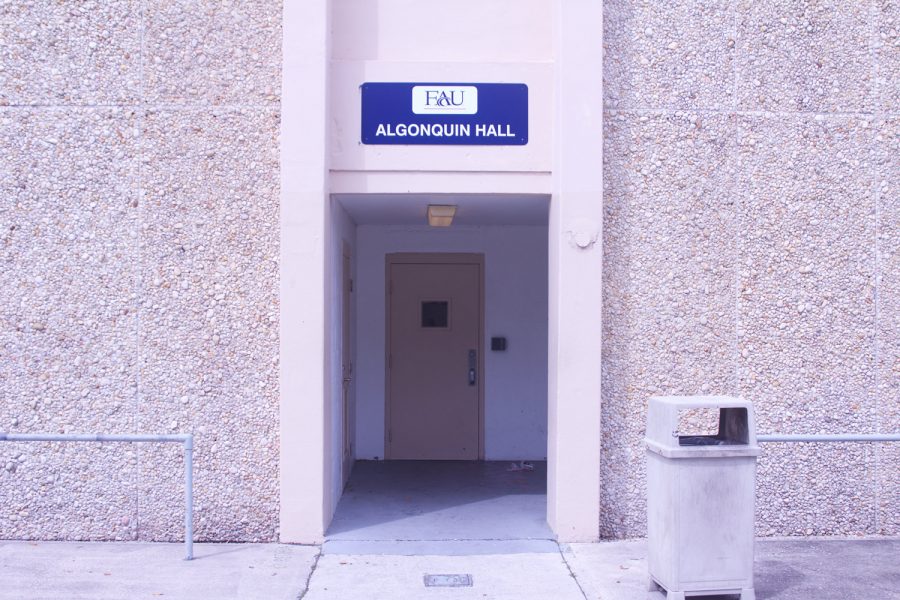There are new residents on FAU’s campuses that snuck in right under our noses. These new residents, who grew quickly from a handful to hordes, aren’t concerned with rising tuition, lack of parking or midterm exams. Instead, they are covered in scales and have claws and tails. They are non-native exotic reptiles.
The two most prevalent on FAU’s campuses are the iguanas and curly-tail lizards. According to FAU professor Hank Smith, who’s also a wildlife biologist for the Florida Park Service, these non-natives pose serious threats to native animals, including FAU’s mascot, the burrowing owl.
The curly-tail lizards are four to six inches long. They’re brown with some yellow on the neck and a light underside. The lizards have fat bodies and tails that curl over their backs. They are originally from the Bahamas, but are now finding South Florida sidewalks and parking lots comfortable homes because such terrain imitates the rock out-croppings over sandy beaches in the lizards’ natural habitat.
Smith says that J.N. Clark, a resident of Palm Beach, was visiting the Bahamas in 1943 when he first encountered the curly-tail lizards. He noted their ravenous appetite for insects and thought they might be helpful in his bug-infested sugar cane fields. Perhaps he even thought, “Hey, that looks cool. Let’s bring it home,” Smith says. Clark released 40 lizards on his property after returning home to South Florida.
According to a 2005 Southeastern Naturalist article written by Walter Meshaka and other biologists, including Smith, the curly-tail lizard now can be found from Hobe Sound -which is north of the Jupiter campus – to Lighthouse Point – which is north of the Fort Lauderdale campus. The article concludes that the curly-tail lizard is spreading its range about a mile a year. That doesn’t sound like much, but “for a five-inch lizard, it’s like walking over the Pacific Ocean from California to Asia,” Smith says.
“The lizards are really going to town,” Smith jokes. In places where he has found higher populations of curly-tail lizards, there are lower populations of native lizards, like brown anoles. Although no study has been completed, according to Smith, this probably means that the curly-tail lizards are out-competing or eating Florida’s native lizards.
Green iguanas can be seen basking in the sun around the lakes near the Christine E. Lynn College of Nursing building on the Boca campus and the parking garage near Lot 1. As many as nine have been spotted around one lake, including an especially large iguana that’s almost orange, with broad stance, beady eyes and a row of tall scales down its back.
Green iguanas, like the curly-tail lizards, are invasive to South Florida. And, as with the curly-tail lizards, it is people who are responsible for their appearance here. The culprits are mostly pet owners, who no longer want a four-foot-long iguana in a cage in the back yard.
The invasive green iguanas hurt South Florida’s native species, and threaten FAU’s burrowing owl.
According to Kristine McGrath, assistant vice president of FAU Media Relations and press secretary, the Owls are a very important part of FAU’s community. “FAU’s burrowing owls are truly emblematic of the University itself … the feisty little birds are resourceful, loyal and adaptable – all qualities that FAU values and works to instill in students,” McGrath says.
The burrowing owl is classified as a “Species of Special Concern” by the Florida Fish and Wildlife Conservation Commission because it “has a high vulnerability to factors that may lead to its becoming a threatened species in the absence of appropriate protection,” according to the Commission’s website, myfwc.com.
FAU was designated a burrowing owl sanctuary in 1971 by the Audubon Society. Unfortunately, the burrowing owl doesn’t seem to get the kind of sanctuary it needs.
Azita Dashtaki is the director of Space Utilization and Analysis and a member of FAU’s Conservation Committee, a group of faculty and graduate students who concentrate their studies on gopher tortoises and burrowing owls. Dashtaki says that the university has completed a Burrowing Owl Management Plan, which “establishes the guidelines for managing designated areas to promote new owl burrows and also how to protect the existing burrows.”
However, the Burrowing Owl Management Plan doesn’t say anything about protecting owl burrows from green iguanas, Dashtaki says. In fact, he says he was “not aware of them having an impact on the owl habitats.”
Dashtaki says the green iguana population “has not been an item the committee has addressed in past meetings but probably will be included as a topic of discussion for a future meeting.”








Iris • May 9, 2018 at 11:03 am
The fat little lizards have spread past lighthouse point in Fort Lauderdale, these are found everywhere in Broward county, and Miami Dade County they are in the the Florida Keys as well. They are ugly little things that just scurry away from their sun bathing when you pass them. I see a lot less old school lizards around mostly the clear lizards at night and the fat ones in the day time. I never saw the fat lizards growing up. I think these were noticeable in my area in the last 5-6 years.